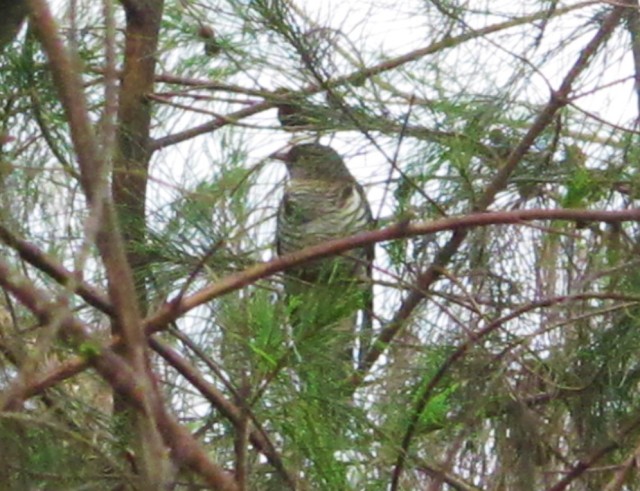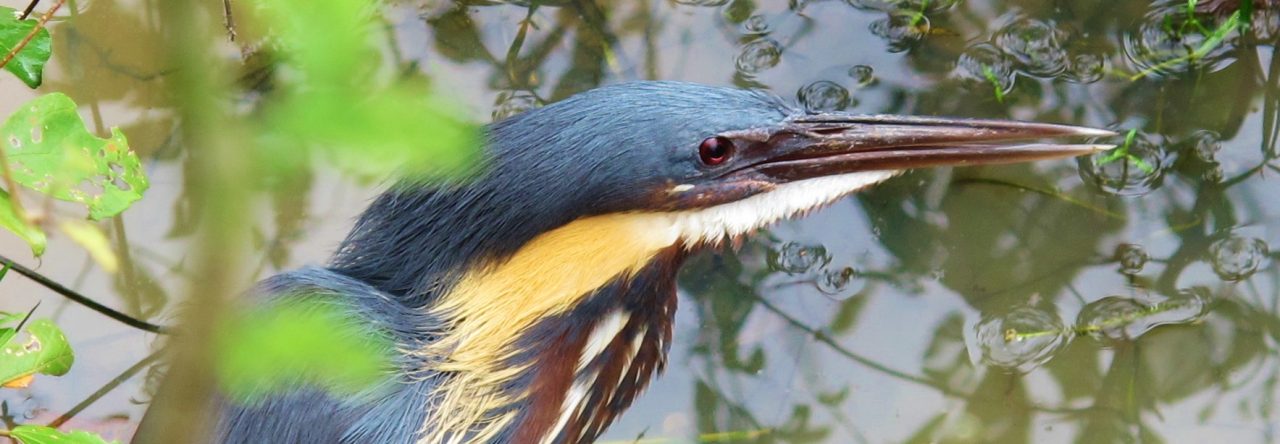
Taiwan has endured several “direct hit” typhoons in recent weeks, which have proven to be a mixed blessing for birders at Qigu, south-west Taiwan’s premier birding location. On the one hand, storm surges and 100mph winds have wreaked considerable havoc and destruction to the site’s fragile coastal woodlots. Formerly an extensive coastal pine forest, “Area A” is now little more than a narrow, sand-blasted belt of broken trees, choked with flotsam and jetsam and more or less completely devoid of vegetation, while another woodlot to the north has fared little better. On the other hand, heavy rains associated with the typhoon systems have brought in a splendid range of scarce migrant birds.
Qigu’s recent purple patch began a day after the passing of Typhoon Megi, when Richard Foster found a splendid Orange-headed Thrush late in the afternoon in Area A. With a clear night forecast, the chances were low that the bird would remain until the following day – especially in such unsuitable habitat with little in the way of shelter – but remain it did, and the small crowd of birders and photographers at the site on Friday morning were treated to a fine show as the bird hopped around on the sand gobbling up mealworms.

The event was also remarkable in that all four resident British birders in Taiwan were present at the “twitch”, making this visit more of a social occasion than the usual solitary odyssey that birding in Taiwan tends to be.
Phylloscopus warblers have been a feature of this period, with small numbers of Arctic Warblers usually present in the woodlots, in a bewildering array of plumages and with very variable calls. A Pale-legged Leaf Warbler (distinguishable from Sakhalin by the frequency of its call) has been present in one of the woodlots for at least ten days, while Taiwan’s first Greenish Warbler was found, photographed, and sound recorded by Steve M on October 9th and was still present on 10th at least. This bird has been vocal at times (a distinctive, slightly slurred, markedly disyllabic “tsoo-ee”), but also very active and mobile around its chosen woodlot, making good views and photos hard to obtain.

Another very notable record was a small arrival of Narcissus Flycatchers on October 8th/9th, including a splendid male, and a female-type bird that bore several of the hallmarks of the recently-split Green-backed Flycatcher (ficedula elisae), most notably a yellow wash to the underparts contrasting with very white undertail-coverts. This is another potential first for Taiwan. I was perhaps the sole observer of a female Blue-and-White Flycatcher on October 4th, while a moderate fall of Grey-streaked Flycatchers occurred on 9th with at least 6 and perhaps as many as 10 birds in the general area. I finally got my fly-over Pechora Pipit on 10th (they have been very numerous on passage at several sites in northern Taiwan), and several flocks of Chestnut-cheeked Starlings lingering in the area on the same day were an impressive sight (and a useful year tick).
My personal favorite was a bird that flushed from under my feet in the grass under some pines, and promptly disappeared into some tangled vegetation under a tree. Glimpses of a mouselike bird scuttling around in the shadows raised hopes that it was a locustella warbler, although at first I was reluctant to consider Lanceolated Warbler as the bird had appeared too warm above on the split-second flight views I initially obtained. However, Lanceolated it did indeed turn out to be, and at one point I enjoyed point-blank views down to just one meter, but the bird was always too quick or obscured for me to get a photo (although Steve managed a record shot).

Away from the woodlots, large numbers of shorebirds in the general area include up to three long-staying Temminck’s Stints in the Tucheng area, with one Little Stint also remaining there. One productive post-typhoon day brought a number of terns to the estuary mudflats at low tide, including 30 Gull-billed Terns – a good count. Meanwhile, the area’s main winter draw for many visiting birders – Black-faced Spoonbill – has started to arrive. This is a very common winter visitor to wetlands along the coast throughout south-west Taiwan.
Highlights from the Qigu area (including Tucheng and Anping), September 30th-October 10th:
Eastern Marsh Harrier
Chinese Egret
Black-faced Spoonbill
Malayan Night Heron
Broad-billed Sandpiper
Terek Sandpiper
Grey-tailed Tattler
Bar-tailed Godwit
Black-tailed Godwit
Pied Avocet
Temminck’s Stint
Little Stint
Brown Noddy
White-winged Tern
Gull-billed Tern
Black-capped Kingfisher
Black-naped Oriole
Azure-winged Magpie
Black-naped Monarch
Dusky Warbler
Yellow-browed Warbler
Arctic Warbler
Greenish Warbler
Pale-legged Leaf Warbler
Lanceolated Warbler
Black-browed Reed Warbler
Grey-streaked Flycatcher
Asian Brown Flycatcher
Blue-and-White Flycatcher
Narcissus Flycatcher
Orange-headed Thrush
White-shouldered Starling
Chestnut-cheeked Starling
Pechora Pipit
Richard’s Pipit
2016 World Year List total: 839
Taiwan Life List: 306

